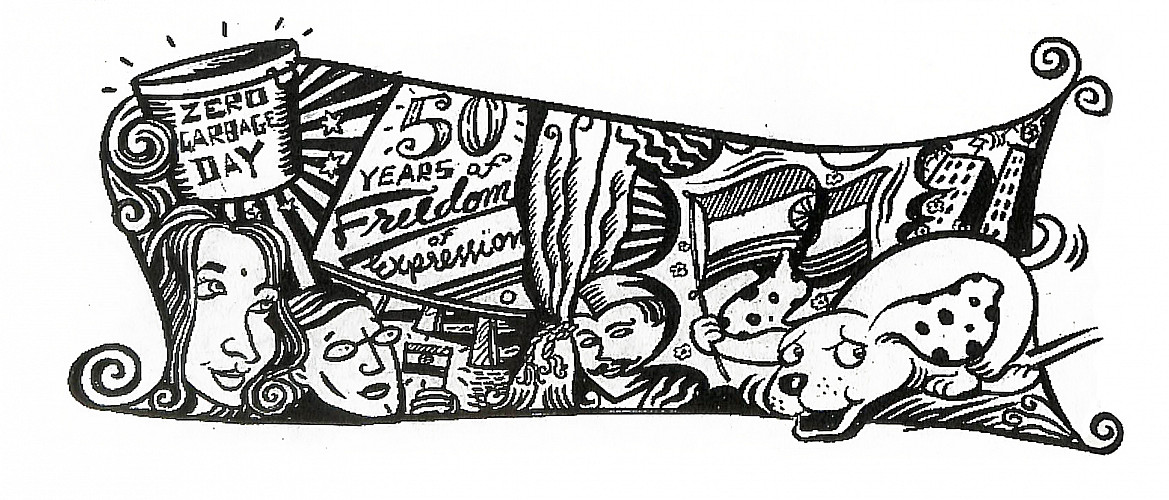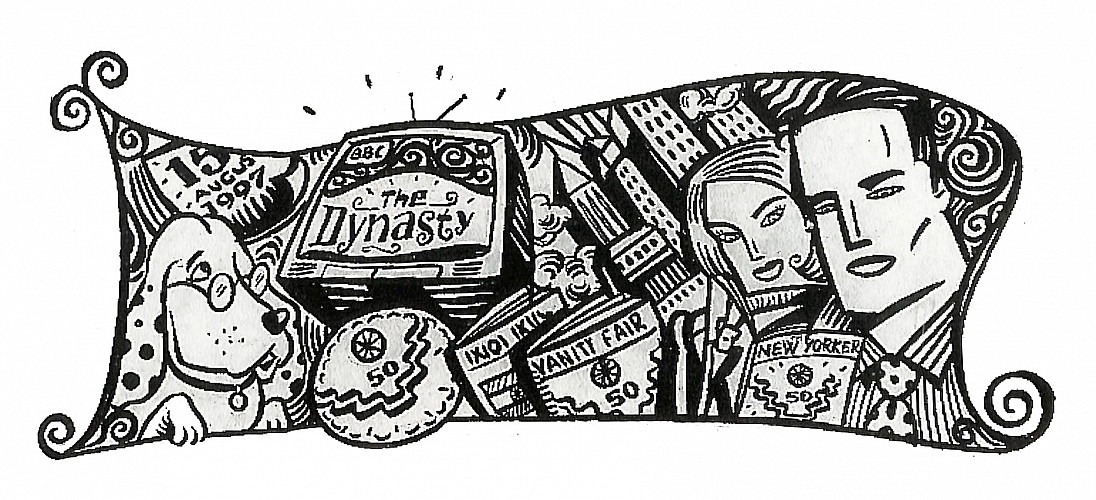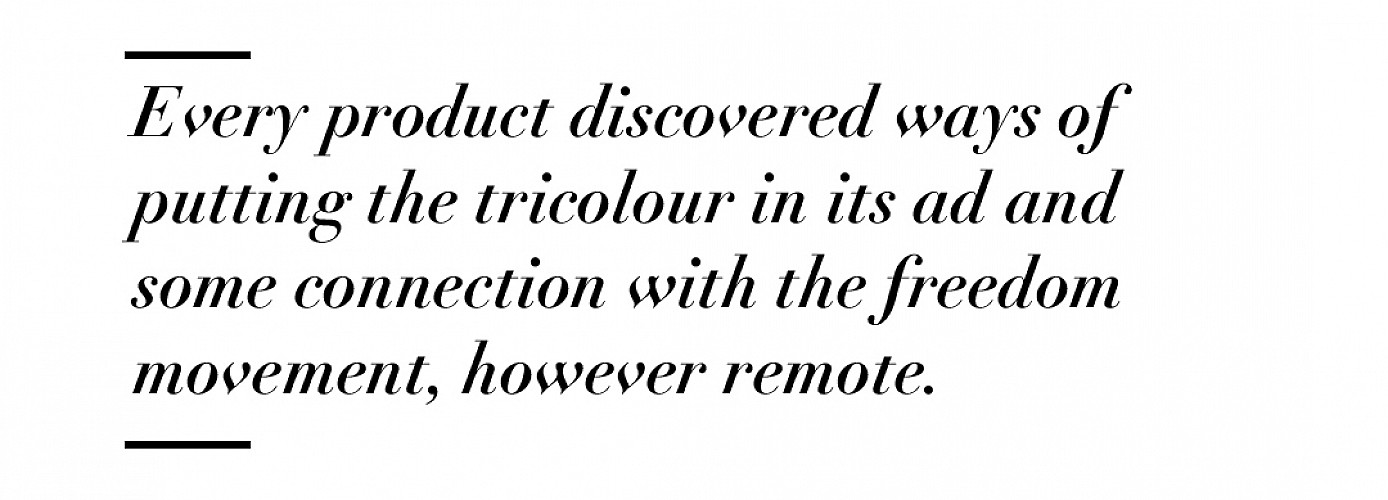Columns
Illustrations by Prashant Kanyalkar
This column was originally published in Verve Magazine’s Volume 5, Issue 3; July-September 1997.
You would think, wouldn’t you, that the Government of India had enough notice that this year’s 15th August was somewhat special? And that it needed long-term planning to commemorate it in a way beyond the routine?
But clocks and calendars run differently for the government. So instead of the three years or so which should have gone into the organisation of national celebrations, we have had nine months of committees. (Is there a Freudian symbolism hidden there?)
The National Committee was the mother of all committees. It had 227 members including cabinet ministers, all chief ministers, presidents of all major political parties and all ex-prime ministers. That’s a lot of politicians, which is probably why in their two meetings, members came up with ideas like these for a 50-year celebratory bash: Eliminate scavenging. Encourage the growth and welfare of the farming sector. Set up an institute for Comparative Religions. Establish a multi-religious centre at Ayodhya. Build a Hall of Freedom in Delhi. “We want to celebrate in such a way as to ignite the imagination of our youth,” said one of the members of these and other ideas. Oh well.
Perhaps it’s easy to sneer. The reason why a National Committee has to exist is that no government can take a chance by leaving anybody out: it anticipates criticism of non-inclusion by co-opting just about everybody. It’s a time-wasting but necessary ritual.
If they had asked a small organisation to simultaneously get on with it and staffed it with men of ideas and vision supported by men of action, even nine months might have produced one healthy body. But the secretariat which was set up, was neither given its full staff nor was its budget released in time. Its time, instead, was spent in organising meetings of the National Committee plus the Special Cabinet Committee, the Implementation Committee, state government committees and as many as ten advisory committees.
Come to think of it, this was a celebration of sorts, and an apt one at that.
Government By Committee
After all, our 50 years have been notable for the fact that we are like this only: government by committee so that there’s a lot of talk but no action: the constant striving to please everyone that in the end no one is pleased; an absence of forward planning and the last-minute scramble to retrieve the situation; the sanctioning of plans on paper and the inability to release funds when they are needed; a lack of will masked by the paperwork of bureaucracy… And, finally, the inevitable reassigning of dates. So here it is: the government has officially decreed that there will be a year-long celebration of our golden anniversary. Beginning 15th August 1997. Neat.
As it happens, the mood in the country was sombre rather than joyous. Laloo Prasad Yadav, Sitaram Kesari, Mayawati, Rabri Devi, H. D. Deve Gowda… That was our roll call of honour; these were our freedom fighters of today (the freedom to have unfettered ambition and to hell with the cost). We needed a very large shove to get us out of our slough of despond and the government was not providing it. There we would have remained, moping and dragging our feet, if it hadn’t been for the Foreign Hand.
The Foreign Hand was, first and foremost, British. The BBC led the way with The Dynasty, its documentary on the Nehru-Gandhi family. It didn’t tell us anything we didn’t know (that’s the problem everyone was faced with), but the archival footage was fascinating. I found the Indira Gandhi episode especially interesting as it showed the transformation of a painfully shy woman into the dominating politician of her later years. Even here was a surprise: so deeply has the image of Indira Gandhi as Empress of India become embedded in our minds that we expect to see a disapproving martinet with a stern voice. Instead, we see that the shyness of her manner never really left her, and that her voice remained that of a schoolgirl even till the end.
That’s only one of many programmes on British television. But the printed word wasn’t going to be left behind: every publication worth its name brought out at least one cover story in its colour supplement or magazine section.
Even Americans who were immune to Indophilia all these years, succumbed to the 50-year infection with cover stories from Time and Newsweek and special issues from The New Yorker and Vanity Fair. So we, who have always looked to the West to usher in our trends, even if they were based on purely ‘Indian’ things like the sitar or meditation or yoga or ayurveda, now in supreme irony took our cue from the West to celebrate the 50th anniversary of our freedom from the rule of the West.
The 50-Year Infection
Once we had begun, there was no stopping us. The trickle became a stream, the stream, a torrent, the torrent a flood. To make any sense of it, here are some classifications.
The Unexpected: The rehabilitation of Jinnah. A re-appraisal of the founder of Pakistan had to happen someday. Who would have expected it now? But it came strongly. A book by Philip French sowing the seeds, and magazine and newspaper articles following it up, either pro or con.
The Faces Behind The Knives: Outlook magazine’s brilliant cover story on the Partition worked because it went to the other side of the divide as well, and talked to people in Pakistan who were affected. Time too showed the human tragedy of our holocaust. Other publications took up the theme as well. At last, collectively, we have begun to look squarely in the face at this horrifying chapter of our history which we had all buried very, very deep in our consciousness. For a younger generation for whom Partition is only a word, it must now be very clear why India and Pakistan can never really get together.
The Face Behind The Knife: The mad story of the Radcliffe Award and the man behind it, Sir Cyril Radcliffe, given — against his will — the job of taking a pen and drawing a line across undivided India, to forever decide what went where, and who became a Pakistani and who an Indian. Lahore, unbelievably now, was a touch and go case. It may well have been an Indian city.
Tales From The Border: Maseeh Rahman’s story for Time from the Wagah border and Robert Nichelsberg’s surreal photograph of two sentries standing next to each other at touching distance, one an Indian, the other Pakistani, both frozen in postures of hostility, both about to begin a daily war dance, much like ritualistic movements of birds marking out their territories.
Cultural Bonding: We know about the cultural bonding across the border, but we never think of cultural bonding elsewhere. It needed Span magazine to remind us about individuals who forged surprisingly close links between India and the USA. Like Mark Twain and Swami Vivekananda, like Emerson, Melville, Whitman and Thoreau, like Elihu Yale, an American who worked for the East India Company as Governor of Fort George in Madras when he gave a donation to an American college which then became Yale University. Or like Sam Stokes, scion of an old Boston family who came to India at 22 and never went back, becoming a follower of Gandhi. He settled in Himachal, imported thousands of apple seeds from America, gave them free to the mountain people and thus gave birth to the state’s flourishing apple industry.
Big Brother India
Pakistan, anyone? In the theme of India, 50 years, everyone seemed to have forgotten that it was also Pakistan, 50 years. OK, so we couldn’t remember, but what about the rest of the world? Books, magazines and television all over, harped on the first theme and had collective amnesia about the second. Even satellite television in this region Star, Sony and the rest, adopted an Indian motif for their special logos, while beaming to other countries including Pakistan. How do you think people there felt? Big Brother India strikes again?
Never The Twain Shall Meet: Given the above, the jubilee provided an unparalleled opportunity for joint celebrations. Yet no one thought of it, except Asia House, a recently set up organisation in Britain, which organised a gala dinner at the Royal Albert Hall in July with Prince Charles as the chief guest. If only others had followed that example….
Windfalls – I: The Times of India, on successive days used as its main edit page article, Nehru’s famous “tryst with destiny” speech and Jinnah’s not so well-known address to the constituent assembly in Pakistan. It was a joy to read the full text of the Nehru speech, with its complex syntax and its rolling cadences. After reading Jinnah’s words, one wished that they were better known. They make such a ringing declaration for a secular Pakistan that copies of the speech should be circulated to all the fundamentalists of that country.
Windfalls – II: Another unexpected bonus of the jubilee is the British Museum’s exhibition, The Enduring Image, which will come to Delhi and Mumbai in October. As many as 300 priceless art objects and antiquities will do the journey, collected from ancient Egypt, Greece, Mesopotamia, the Roman Empire, the Americas and East Asia. The Museum is deliberately not bringing its Indian antiquities, after the hullabaloo that was raised when the Padshahnama was exhibited in Delhi last year (“This is ours and must not be allowed to leave India,” some people said). Further good news: the Museum’s director has said that this is only the beginning. Many more exhibitions will follow.
Windfalls – III: This has to be the most far-fetched yet, but welcome nevertheless. The Brihanmumbai Municipal Corporation decided to celebrate the jubilee in a unique way by declaring 15th August, “Zero Garbage” Day. In a city where being a pedestrian is injurious to health, a day of freedom from garbage was a blessing. Everyone wants encores.
Windfalls – IV: Begum Sumroo has nothing to do with the Jubilee, but Partap Sharma’s play brings to life a fascinating yet unknown bit of minor history. The play has flaws, especially its leaden dialogue, but director Alyque Padamsee keeps you engrossed.
More Than A Thousand Words – I: Art exhibitions of all kinds, all over the world, some with rather tenuous connections with the Jubilee. But nevertheless it was an opportunity to get precious art out of mothballs and into galleries for us to enjoy. RPG Enterprises’ two exhibitions, 50 years of Freedom of Expression, was splendidly organised and featured some work of a very high order (with some which wasn’t, but that’s to be expected).
Abroad, there was the six-month long exhibition of contemporary prints from India and Pakistan which began in April at the Victoria and Albert Museum. The V & A also showed Shamiana, an exhibition of Mughal and Rajput decorative arts. Then there was India: A Celebration of Independence, 1947-1997 which ran in the Philadelphia Museum of Art till the end of August. This showcased 250 photographs taken by 21 photographers over the last 50 years.
Asia Society in New York put up an exhibition of miniatures God, The King and Tiger: the Art of Kotah which got rave reviews. Its show in Washington, King of the World, was devoted to the artistry of the Mughal dynasty which peaked in the region of Shah Jahan in the 17th century. The Padshahnama was also shown.
More Than A Thousand Words – II: The National Film Theatre, London’s season of Indian films. Instead of choosing the movies themselves, NFT asked Indian authors to choose one each. You thus got an interesting — though disconnected – mix.
The Thousand Words Themselves: Actually there were millions, as book after book, hit the stands. But the one which made the biggest impact was Salman Rushdie and Elizabeth West’s The Vintage Book of Indian Writing 1947-97. Thanks to Rushdie’s now notorious essay in which he took all of India’s non-English writing and dumped it into the Arabian sea. Ridiculous, agreed. But supposed he had called the book Indian Writing in English no one would have created a fuss, and the book would have been like any other. Publications – newspapers and magazines – added their two bits to the celebrations. But, tell me, do you remember a single article of the thousand or so written for the occasion? All that happened was the publications made a lot of money on ads. And we made a little extra from our raddiwala.
The Discovery Of India – I: Every product discovered ways of putting the tricolour in its ad and some connection with the freedom movement, however remote. One product epitomised it all. It was from a foreign soft drink manufacturer who dressed his bottle like a champagne bottle. You paid more for the privilege of celebrating with it, and celebrated the Jubilee with fake fizz.
The Discovery Of India – II: Everyone stumbled across an old song which had it all: fine words, lilting melody and patriotic feeling. Who could ask for more? So it was that Vande Mataram was orchestrated into documentaries, sung at the drop of the flag, spoken into the camera by celebrities and made into a pop-hit by the thumping percussion of A.R. Rahman.
The Last Word: The final word must belong to Ravi Shankar. At the Tata Theatre, he played from 10 p.m. to past midnight on 14th August, thus ushering in the Jubilee. His playing, as usual, transported you to a different plane (floating somewhere in space), and at the stroke of midnight the raga he was playing metamorphosed into Sare Jahan Se Achcha Hindustan Hamara, the tune he wrote to Iqbal’s words. He signalled the packed house to join in, and we – stiff upper lipped, not given to singing in public – began hesitatingly, then joined full-throatedly.
It was magical. So magical, in fact, that we almost believed the words.


